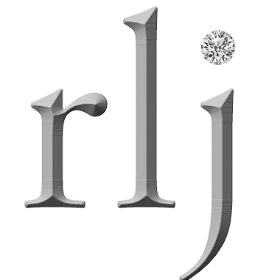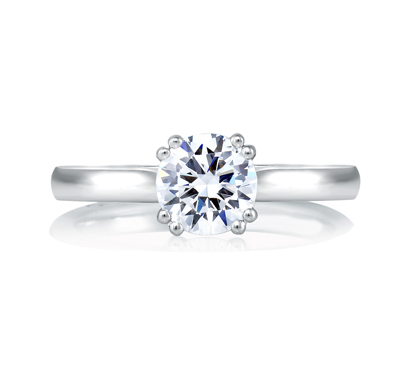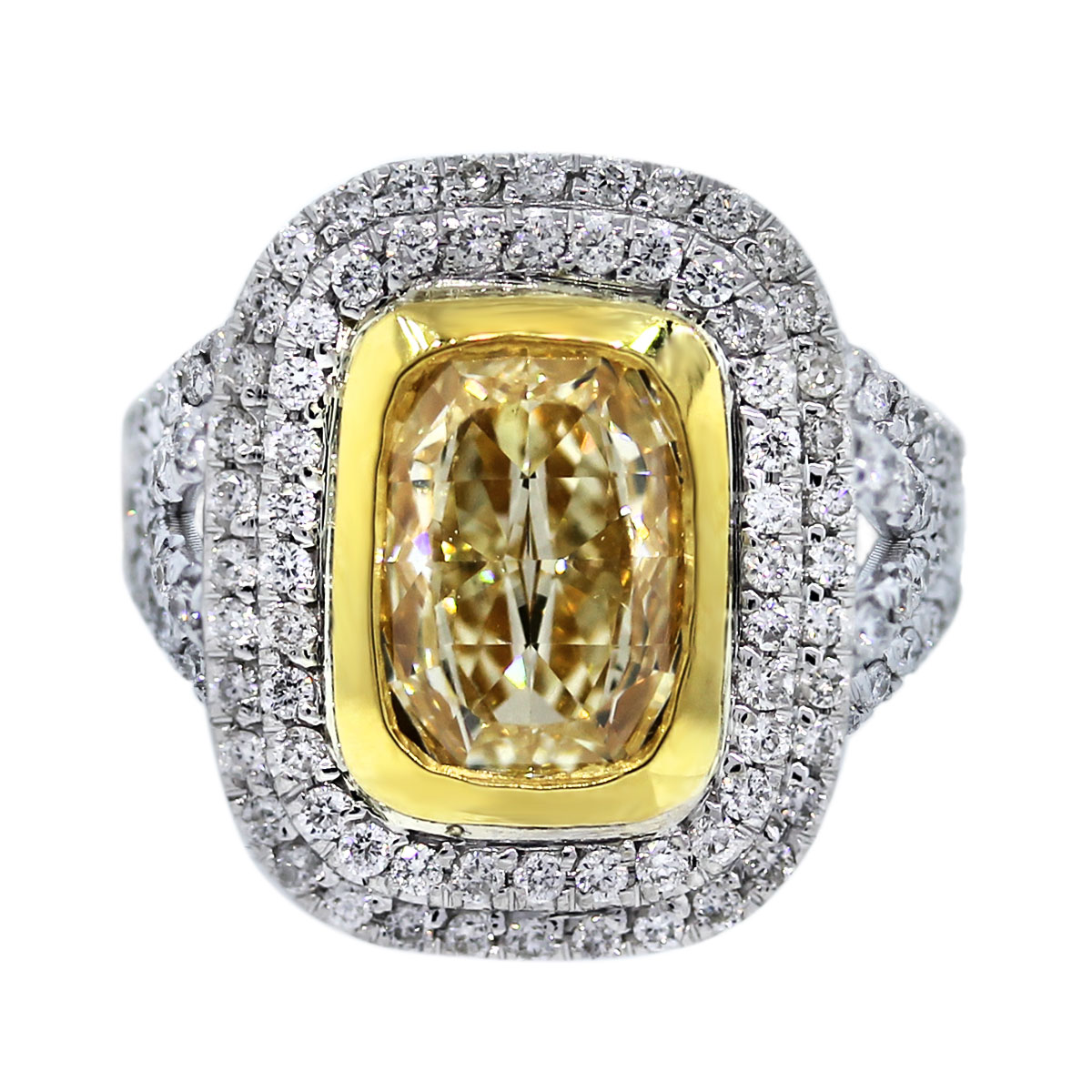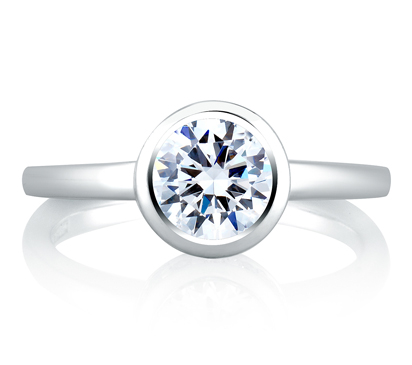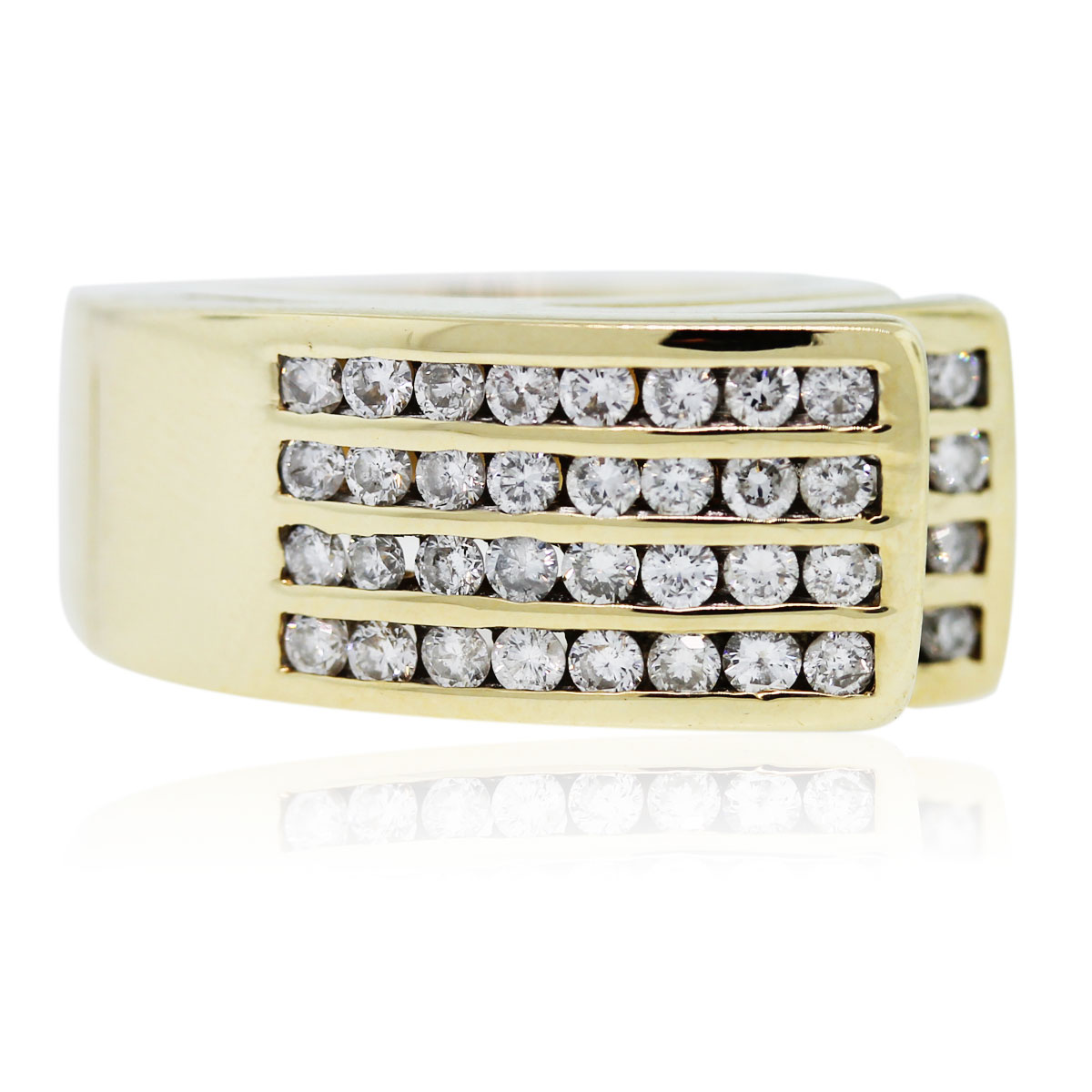Ring Settings: All You Need to Know

You’ll want to learn about different ring settings when choosing a new piece of jewelry. Whether you are buying an engagement ring or a piece of statement jewelry, it is important to know your options. There are tons of ring settings that lend themselves to very different looks and feels. These settings refer to how gemstones are inset into a band and their configuration within the band. This refers to the central stone of the ring, and can also refer to settings around the band of the ring.
You have tons of options. This makes choosing a ring that perfectly suits your style a lot easier. Understanding the huge variety of settings means that you can have more options for styles and configurations. Especially when the ring is an engagement ring, which you will wear every day, you want to make sure that the ring you choose is one that you’ll love. You want a ring that will work with your lifestyle, fashion sense, and personality.
Not All Rings Are the Same
Different ring settings will lead to rings that have a very different look and feel from one another. Some of these settings are simple and classic in design, such as the basic prong setting. This is a great setting for those who like classic and timeless elegance. Other settings are bolder and give the ring a more modern and eclectic look and feel, such as gypsy and tension settings. Having all these choices makes it easier to pick out an engagement or other ring that will be perfect for yourself or the person it is bought for.
You want to think about the wearer’s style, their lifestyle, how active they are, their personality, and their fashion sense. This will help guide you in choosing the best possible setting for yourself or the person you are buying the ring for. You want to consider comfort, the lifestyle of the wearer, and more. If the person you are buying the ring for is particularly active, you might want something that is more durable and versatile, but that doesn’t have a ton of stones sticking out from the ring that could get stuck on things.
Additionally, you want to make sure that the ring settings you choose from work with the wearer’s fashion sense. Is their style classic, modern, bold, trendy, or edgy? The answer to this question will help guide your purchase decision.
Different Settings for Different Styles
Rings come in a ton of different styles. Different settings suit themselves to different types of stones and work best with different fashions sense. Here, we will briefly take a look at some of the most popular ring settings. The settings we describe here aren’t the only ring settings available, but they are the most popular and commonly seen.
You can easily find the perfect setting for the ring you are choosing. Once you consider the style of the wearer, their fashion sense, their personality, and their lifestyle, you can more easily choose an engagement or ring as a present that will be perfect for them. Especially with engagement rings that are worn daily, you want to make sure that the ring you choose is something that is suitable to the wearer.
Let’s briefly take a look at the most popular and common ring settings available. As we mention, these aren’t the only setting that is available. If the following settings aren’t to the liking of the wearer, you can do a bit more research to find other, less common ring settings. With new computer modeling, jewelers can more easily create new and custom settings.
Prong
One of the most common and popular ring settings is the prong setting. This is a classic setting that is great for engagement rings because the design emphasizes the main center stone of the ring.
With a prong setting, the stone will be set on top of the ring. What holds the stone in place is between 6 and 6 metal prongs. These prongs securely hold the stone in place. There are different types of prongs, such as round, v-shaped, flat, and more. The different prongs will give the ring a different look and feel.
The stone features more prominently the fewer prongs that one uses in a ring. However, the more prongs you have the more secure the stone is in the ring. This style looks great with stones of a range of different cuts and shapes. The shape and cut of the ring you choose may help guide your choice in the type of prong you choose.
You get a lot of light refraction with this type of setting. The stone is easier to clean and will hold the stones securely in place. Since the stone extends out from the band of the ring, it might not be the best setting for those with more active lifestyles.
Pave
A pave setting is another popular ring setting. The word pave is French for paved or pavement. This style of setting is dainty and elegant. It features rows or clusters of tiny stones that give the ring a more continuous sparkle and shine.
The stones fit into place with tiny beads of metal. They are level with the surface of the ring. The metal of the ring has less emphasis than the stones. The tiny stones create a huge amount of sparkle and give the ring a glamourous and elegant look and feel.
The pave setting has a range of variations. There are petite pave settings, traditional pave settings, and micro pave settings. The smaller the stones, the more glint, and sparkle you get.
This is a great style for those who like elegant and dainty styles. It is not necessarily ideal for stones besides diamonds as this setting makes fragile, softer stones more prone to breakage and damage. It is not the best ring for those with an active lifestyle.
Halo
The halo setting is a unique blend of different ring settings. The ring centers around the main stone, often quite a bit larger than any accent stones. The central stone features smaller stones that encircle the main stone. This may be a pave or micro pave setting, or it may simply use small, round-cut stones.
The encircling of the main stone gives what appears to be a stone halo around the main stone. You may choose to have more than one ring of accent stones, creating multiple halos.
The accent stones add more sparkle and shine to the ring, but still allow the main center stone to shine. This style makes for easy customization of an engagement or other ring. You can use this style to create unique geometric or floral motifs. It can easily take on a vintage look and feel.
This is a chunkier and more versatile ring. It is a good option for those who have more active lifestyles.
Bezel
Another popular ring setting is the bezel setting. This style often uses a single large stone as the focal point of the ring. What makes this setting different from the prong setting is how the stone affixes to the ring.
A bezel setting has a metal rim around the edge of the stone. It may go around the entirety of the stone or just part of it. This style is great for those with active lifestyles because the rim protects the stone.
The stone is incredibly secure in the bezel setting and gives a smooth surface to the ring. You may want to be careful with the type and color of the metal you choose with this setting. Choosing something like yellow gold to pair with a diamond, it may make the stone look more yellow and less clear.
These rings don’t give off the same level of sparkle and shine as other settings.
Channel
Another of the most popular ring settings is the channel setting. This style of setting looks good for statement rings, engagement rings, and wedding bands. It is a style that is popular with both men and women for its simple elegance.
This setting features a row of stones that don’t have metal beads or prongs to separate them. The stones may encircle the whole of the ring, half of it, or even two-thirds of the ring.
You can have a single channel. For example, a channel set ring with a single row of diamonds makes a great wedding band. Or, you may have a channel ring that has multiple rows of diamonds. This style looks great with rectangular and square stones.
This setting is secure and keeps the stones in place. The surface of the ring is smooth and no stones protrude above the surface of the ring. This setting is best for diamonds and harder stones. Fragile stones may break more easily in this setting.
One of the biggest problems with this type of ring is that it can be difficult to resize this style of ring.
Bar
In some ways, the bar ring setting is similar to the channel setting. However, there are some key differences as well. This setting features two or more vertical bars which sit between the stones and hold them in place.
This setting can encircle the whole ring or just part of it. It provides extra protection for the stones, so is great for those with active lifestyles. It creates a smooth surface for the ring. No stones protrude above the surface of the ring.
Another great thing about this setting is that it is a contemporary take on a classic style of ring. It is traditional, with a twist.
Some don’t like this design because the top and bottom of the stones are exposed.
Tension
This is a unique ring setting that uses a compression spring to hold the stone in place. The appearance of this setting makes it look like the stone is floating in the band. It is a more modern style.
This style only works with harder, tougher stones like diamonds, rubies, and sapphires. More fragile stones cannot handle the pressure this setting entails.
Tension settings allow for a lot of light flow and refraction. They also have a very bold and modern look and feel. This is a great ring for special occasions and isn’t necessarily a great choice for those with more active lifestyles.
The way the stones are inset in this ring gives it less protection than other ring settings.
Gypsy
The gypsy ring style is popular with men and a very unique ring setting. They are great for both engagement rings and wedding bands. The stone sits flush in the ring in the gypsy setting.
This means that the stone does not protrude above the band of the ring at all. The metal around the perimeter of the stone then undergoes pressing and hammering to secure the stone into place.
Gypsy ring settings are great for people with active lifestyles. The setting protects the girdle of the stone and will conceal any knicks and scratches that may appear on the stone. The stone is incredibly secure in this setting.
The downside of this setting is that it is more labor-intensive, meaning it will cost more than many of the other ring settings we discuss here. It is also best for harder, tougher stones, as fragile stones can break in the process.
In Closing
Most people don’t realize just how many different ring settings they have to choose from. This is vital, especially when it comes to engagement rings or wedding bands because we wear them every day. This means we want to choose a setting that works well with our lifestyle, personality, and fashion sense. Each setting has unique elements that differentiate it from the other setting styles.
Having a basic understanding of the various ring settings makes it easier to choose the perfect setting for your ring or for a ring you plan to buy for a special someone. When choosing the best setting for you or your loved one, it is important to consider the wearer’s lifestyle. Some of these ring settings are better for those with active lifestyles than others. Some are better for special occasions and not that great for daily wear. Take the wearer into consideration to help you choose the best possible style.
